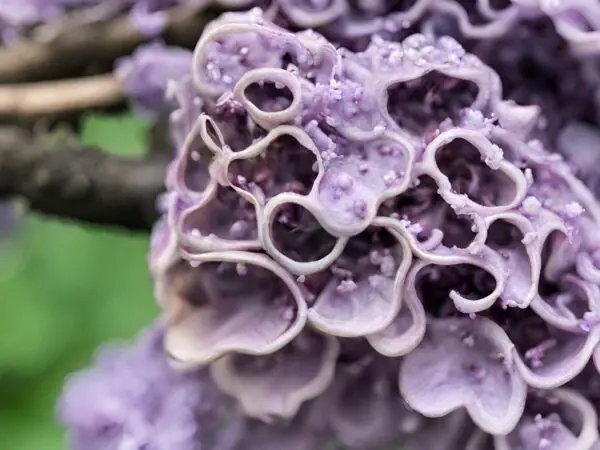Wondering how fast lilac bushes grow? We've got you covered with all the information you need to know about the growth rate of these beautiful plants.
Lilac bushes typically grow at a moderate pace, adding around 6 to 12 inches of new growth each year. Factors like soil quality, sunlight exposure, and pruning practices can influence their growth rate. Stay tuned as we delve into the specifics of nurturing your lilac shrubs for optimal growth and blooming.
Curious to learn more about cultivating vibrant lilac shrubs in your garden? Keep reading to discover expert tips and tricks on fostering healthy growth and abundant blossoms.
Key Takeaways
-
Understand Lilac Growth Factors: Factors like sunlight, soil quality, and water availability significantly impact the speed at which lilac bushes grow.
-
Promote Faster Growth: To encourage quicker growth, ensure your lilac bushes receive adequate sunlight, well-draining soil, and regular watering.
-
Choose Suitable Lilac Varieties: Select lilac varieties known for their faster growth rates to achieve quicker results in your garden.
-
Prune Wisely: Proper pruning techniques can stimulate growth and enhance the overall health of your lilac bushes.
-
Prevent Plant Diseases: Regularly inspect your lilac bushes for signs of diseases and promptly address any issues to maintain optimal growth.
-
Maximize Blooms: By providing proper care, such as adequate sunlight and fertilization, you can ensure abundant blooms on your lilac bushes.
Lilac Growth Factors
Light Requirements
Lilac bushes require full sun for optimal growth, needing at least 6 hours of direct sunlight daily. Planting them in shaded areas can hinder their healthy development.
Ideal Soil Conditions
For ideal growth, lilac bushes thrive in well-draining soil with a slightly acidic pH. Amending heavy clay soil with organic matter improves drainage. Soil testing ensures the pH level is suitable.
Watering Techniques
Water lilac bushes deeply but infrequently to encourage deep root growth. Allowing the soil to dry out between watering sessions prevents root rot. Mulch around the base retains moisture and regulates soil temperature.
Temperature Influence
Lilac bushes prefer temperate climates with cool winters and mild summers. Protect them from extreme heat or cold to prevent stress. Cold-hardy varieties are suitable for regions with harsh winters.
Fertilizer Use
Apply a balanced fertilizer in early spring before new growth appears. Over-fertilizing can lead to excessive foliage growth at the expense of blooms. Organic fertilizers offer a sustainable feeding approach for lilac bushes.
Growth Timeline
From Planting
Plant lilac bushes in the spring or fall to ensure optimal growth conditions. The planting hole should be twice as wide as the root ball, allowing space for root expansion. Water newly planted lilacs regularly to aid in their establishment in the new environment.
To Maturity
Lilac bushes typically take 5 to 10 years to reach maturity, varying based on the specific variety. Revel in the fragrant blooms that mature lilac bushes produce each spring. Keep a close eye on the growth of mature lilac bushes and prune them as needed to maintain their shape and overall health.
Promoting Faster Growth
Proper Care Tips
Inspect lilac bushes frequently for pests and diseases to address issues promptly. Mulch around the base to retain moisture and suppress weed growth effectively. Ensure adequate air circulation around the bushes to prevent fungal problems from arising.
Pruning lilac bushes right after flowering enhances next year's blooms significantly. Eliminate dead or diseased branches to stimulate new growth and maintain plant health. Be cautious with pruning intensity, as lilacs primarily bloom on old wood.
Propagation Methods
Opt for propagating lilac bushes through softwood cuttings during early summer for optimal success rates. Experiment with layering techniques, especially suitable for specific lilac varieties that respond well to this method. For more advanced propagation options, delve into grafting techniques to diversify your propagation skills.
Lilac Varieties
Types Explained
Lilac bushes come in various types, from the common to the rare, each offering unique characteristics. Differences in bloom color, size, and fragrance set these varieties apart. When selecting a lilac type for your garden, consider factors like climate and available space.
-
Common Lilac: Known for its classic purple blooms and sweet fragrance, the common lilac is a popular choice among gardeners.
-
Persian Lilac: With delicate lavender flowers and a more compact size, Persian lilacs are ideal for smaller gardens or containers.
-
French Hybrid Lilac: These varieties boast larger blooms in shades of pink, white, and blue, adding a touch of elegance to any landscape.
-
Dwarf Korean Lilac: Perfect for limited spaces, dwarf Korean lilacs offer clusters of fragrant flowers in hues of pale pink or lavender.
Selecting the right lilac bush can enhance the beauty of your outdoor space while providing a delightful sensory experience with their fragrant blossoms. Consider planting a mix of different lilac varieties to enjoy a prolonged blooming season.
Pruning Lilacs
Best Practices
Plant, water, and care for lilac bushes following expert advice for optimal growth. Incorporate regular maintenance to keep them healthy. Seek guidance from local gardening experts for region-specific care tips.
Common Questions
Discover solutions to frequently asked questions about lilac bush care. Address issues like lack of blooms or yellowing leaves. Equip yourself with troubleshooting tips to handle potential problems effectively.
Plant Diseases and Solutions
Common Diseases
Lilac bushes are susceptible to powdery mildew and bacterial blight, impacting their health and growth. Prevent these diseases by ensuring proper spacing between plants and promoting good air circulation. Promptly treat any signs of disease with suitable fungicides or remedies to safeguard the lilacs.
-
Powdery mildew is a common issue affecting lilac bushes, characterized by a white powdery substance on leaves.
-
To prevent this disease, maintain adequate spacing between plants to allow for good airflow.
-
Treat powdery mildew promptly using fungicides recommended for lilacs to prevent further spread.
Troubleshooting Growth Issues
When faced with growth issues like stunted growth or sparse foliage in lilac bushes, it's crucial to address them promptly. Evaluate environmental factors such as light exposure, water availability, and soil quality that may be hindering optimal growth. Adjust care practices based on specific growth problems to promote healthier development in the lilacs.
-
Stunted growth in lilac bushes can be caused by insufficient sunlight or poor soil drainage.
-
Sparse foliage may indicate issues with nutrient deficiencies or improper watering habits.
-
Ensure lilacs receive adequate sunlight, well-draining soil, and appropriate watering for optimal growth.
Encouraging Blooms
Bloom Enhancement Tips
To enhance the blooms of your lilac bushes, ensure they receive ample sunlight and essential nutrients. By providing these key elements, you can promote healthy growth and vibrant flowering. Deadheading spent blooms is crucial to stimulate the plant to produce more flower buds and fragrant flowers.
Consider using specialized bloom-boosting fertilizers to further enrich the soil and encourage abundant blooming. These fertilizers are formulated to provide the necessary nutrients for optimal flower development. By incorporating them into your lilac care routine, you can enjoy a garden filled with beautiful pink flowers in fragrant clusters.
-
Adequate sunlight and nutrients
-
Deadhead spent blooms regularly
-
Use bloom-boosting fertilizers
Landscape Use
Design Ideas
Incorporate lilac bushes into your landscape design to add bursts of color and delightful fragrance. Create stunning focal points or charming borders by planting lilac bushes in various sizes and hues. Enhance the overall aesthetic of your garden by exploring companion planting options that complement lilac bushes.
-
Experiment with different varieties of lilac bushes to introduce a diverse range of foliage textures and colors.
-
Utilize lilac bushes strategically to create visual interest and structure within your garden space.
-
Combine lilac bushes with other flowering plants to ensure continuous blooms throughout the growing season.
Companion Plants
Choose companion plants that thrive in similar conditions as lilac bushes, ensuring harmonious growth. Opt for perennials with contrasting colors to create a visually appealing contrast against the lilac blooms. Select plants known for attracting pollinators to foster a vibrant and biodiverse garden ecosystem.
-
Pros:
-
Adds visual interest and fragrance to your garden.
-
Creates a dynamic and colorful landscape design.
-
Attracts beneficial insects like butterflies and bees.
-
-
Cons:
-
Requires regular pruning to maintain shape and size.
-
May attract deer or rabbits, necessitating protective measures.
-
Some companion plants may compete for resources with lilac bushes.
-
Seasonal Care Guide
Spring Care
Spring care for lilac bushes involves pruning and fertilizing early in the season to promote healthy growth. Monitor new growth closely and adjust watering practices accordingly. Ensure lilac bushes receive ample sunlight and nutrients to prepare them for the upcoming blooming season.
Summer Maintenance
During summer, maintain lilac bushes by consistently watering them and keeping an eye out for pests. Deadhead spent blooms to encourage continuous flowering and prevent seed production. Provide shade during the hottest parts of the day to protect the bushes from extreme heat.
Fall Preparation
As temperatures cool in fall, reduce watering frequency to prepare lilac bushes for winter. Apply a layer of mulch around the base of the plant to insulate roots during the colder months. Consider light pruning in the fall to shape the bushes and remove any dead or damaged branches.
Winter Protection
Protect lilac bushes from frost and freezing temperatures in winter by covering them with burlap. Avoid heavy pruning during this time to prevent damage to the plants. Regularly monitor for signs of winter damage and address any issues promptly to ensure healthy spring growth.
Closing Thoughts
You now understand the factors influencing lilac growth, from varieties to pruning and disease prevention. By following the growth timeline and implementing strategies to promote faster growth, you can enjoy vibrant blooms in your landscape. Remember to provide seasonal care and create a suitable environment for your lilac bushes to thrive.
Take action today by applying the tips shared in this guide. Share your newfound knowledge with fellow gardeners and continue learning about different plant varieties and care techniques. Your dedication will result in beautiful, flourishing lilac bushes that enhance the beauty of your outdoor space.
Frequently Asked Questions
How fast do lilac bushes typically grow?
Lilac bushes generally grow at a moderate pace, adding about 6 to 12 inches of new growth each year. Factors like variety, soil conditions, and care practices can influence their growth rate.
How can I promote faster growth in my lilac bushes?
To encourage faster growth in lilac bushes, ensure they receive adequate sunlight, water consistently but avoid overwatering, fertilize in early spring, prune properly, and maintain good soil drainage.
When should I prune my lilac bushes for optimal growth?
Prune your lilac bushes right after they bloom to promote healthy growth. Remove dead or weak branches and shape the bush as needed. Avoid heavy pruning as it can affect blooming the following year.
What are some common diseases that affect lilac bushes?
Common diseases that can affect lilac bushes include powdery mildew, bacterial blight, and verticillium wilt. Proper care practices such as good air circulation, avoiding overhead watering, and prompt removal of infected plant parts can help prevent these diseases.
How can I encourage abundant blooms on my lilac bushes?
To encourage abundant blooms on your lilac bushes, plant them in full sun, ensure proper spacing for good air circulation, prune after flowering to remove spent blooms and shape the bush, and avoid over-fertilizing which can lead to more foliage than flowers.
Image Source: Paid image from CANVA



